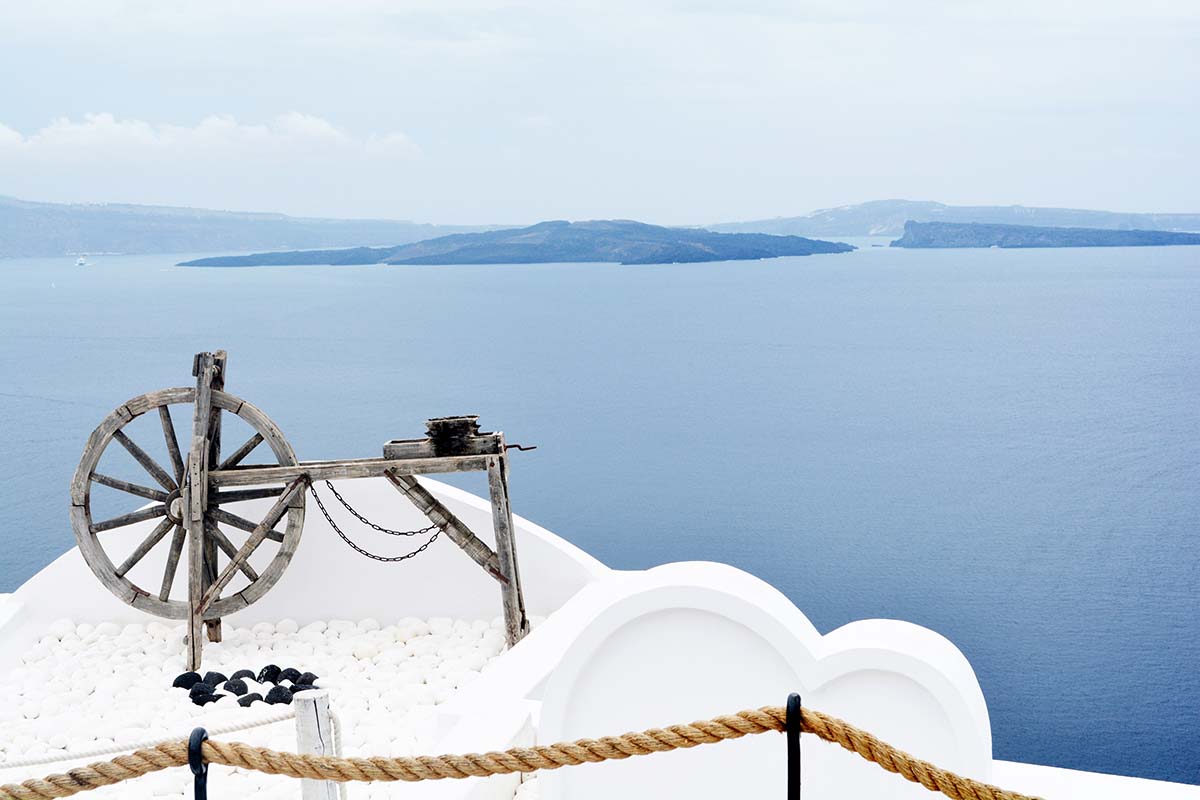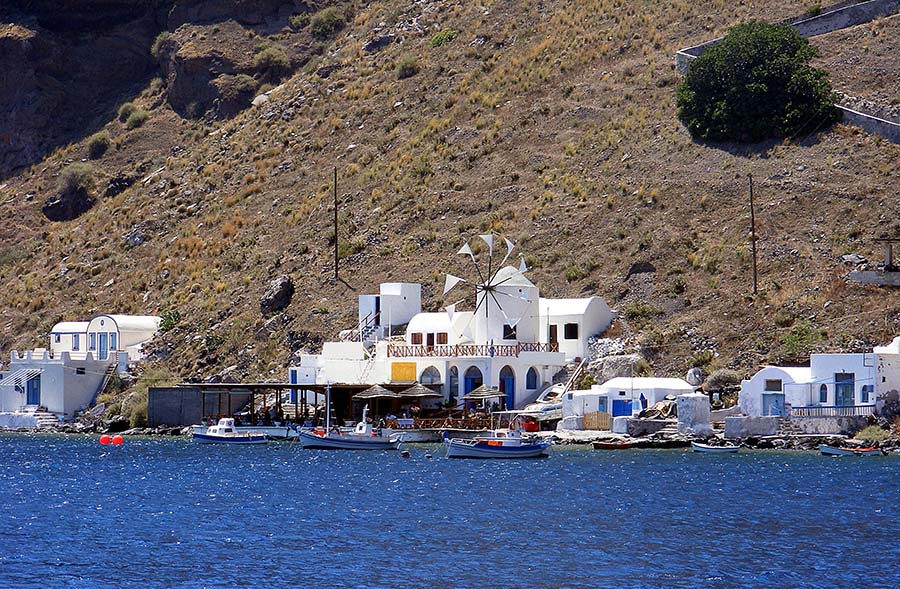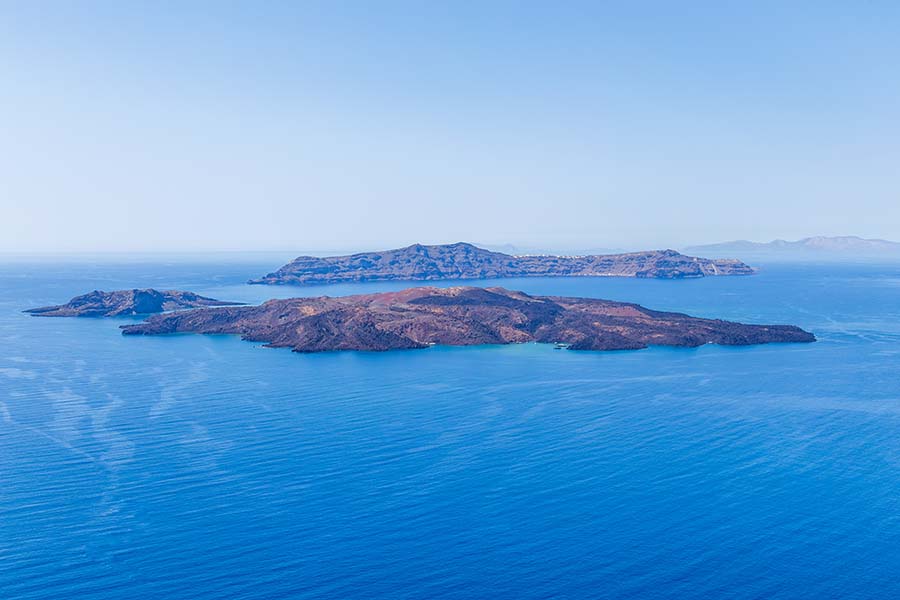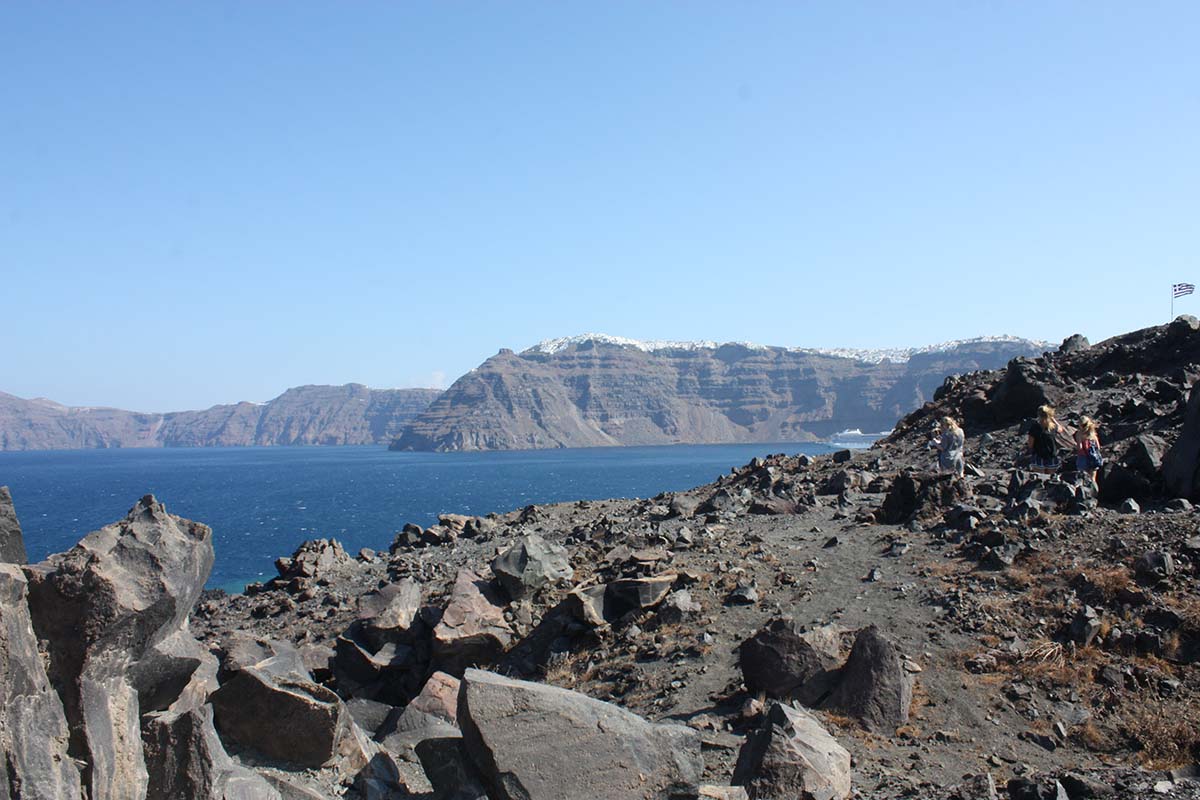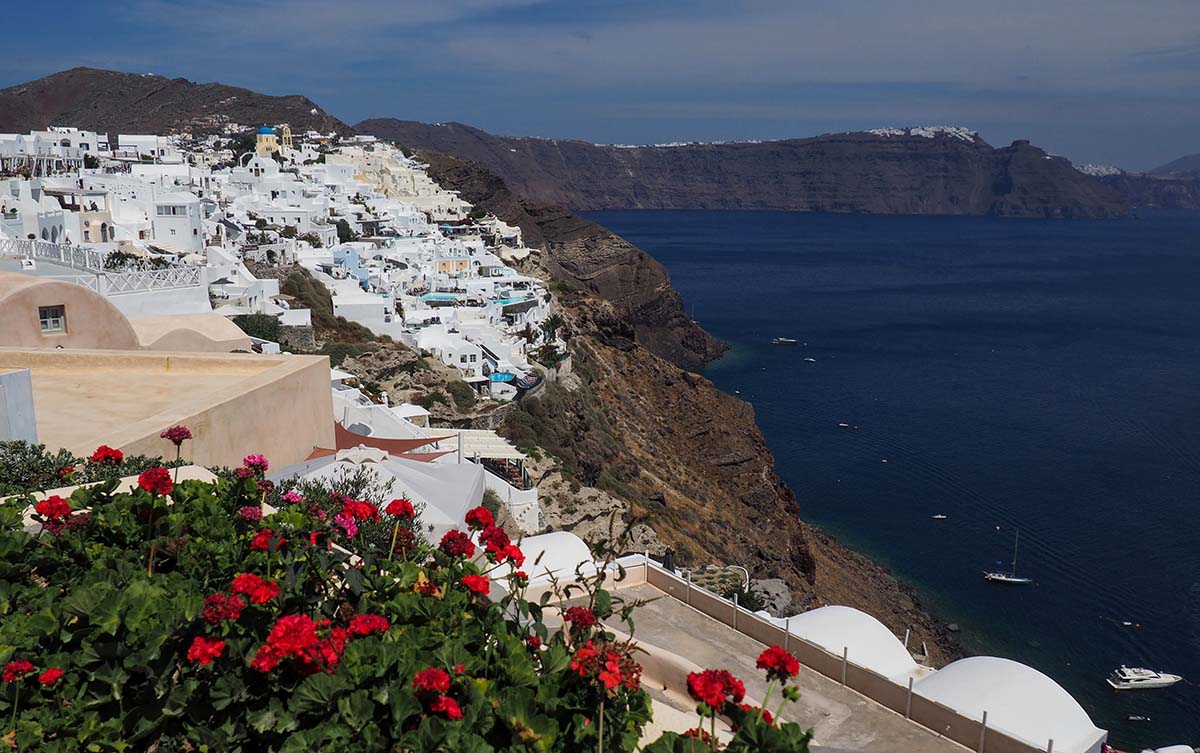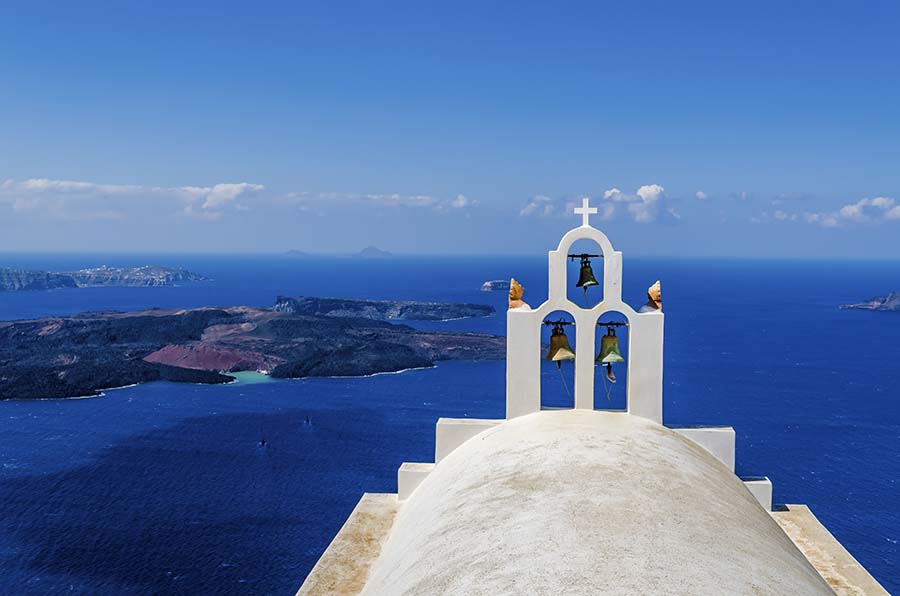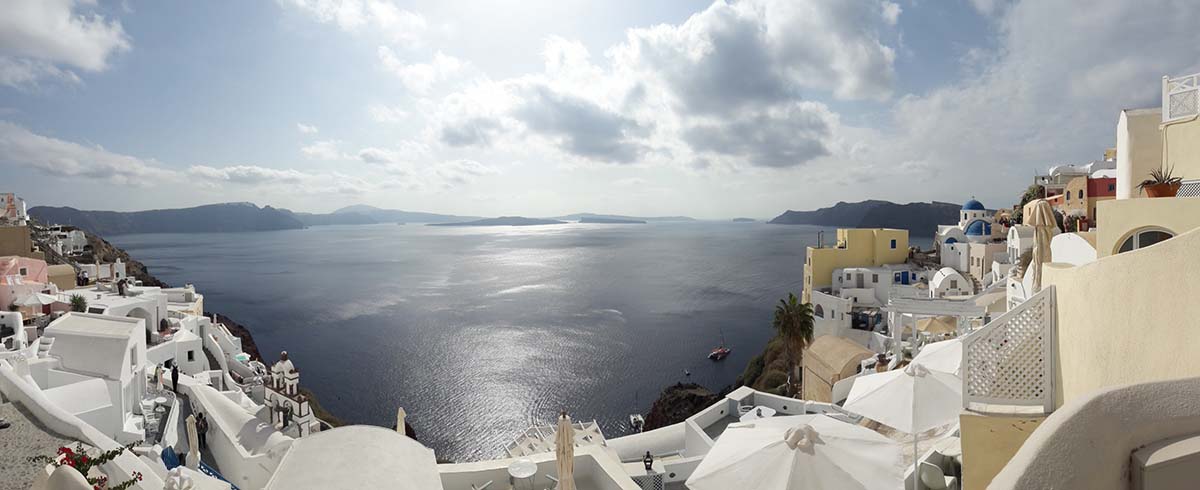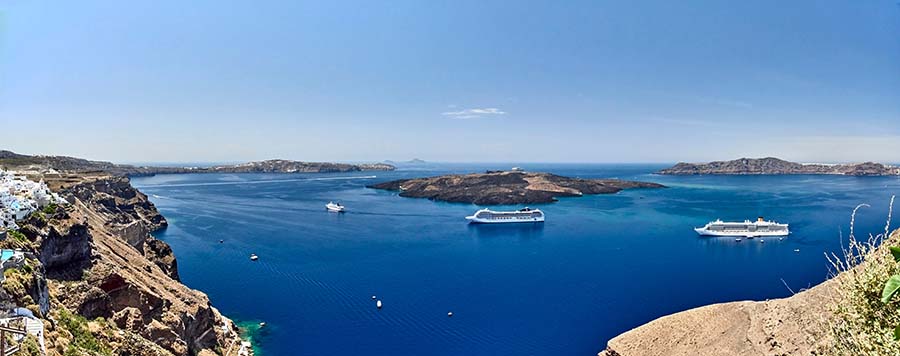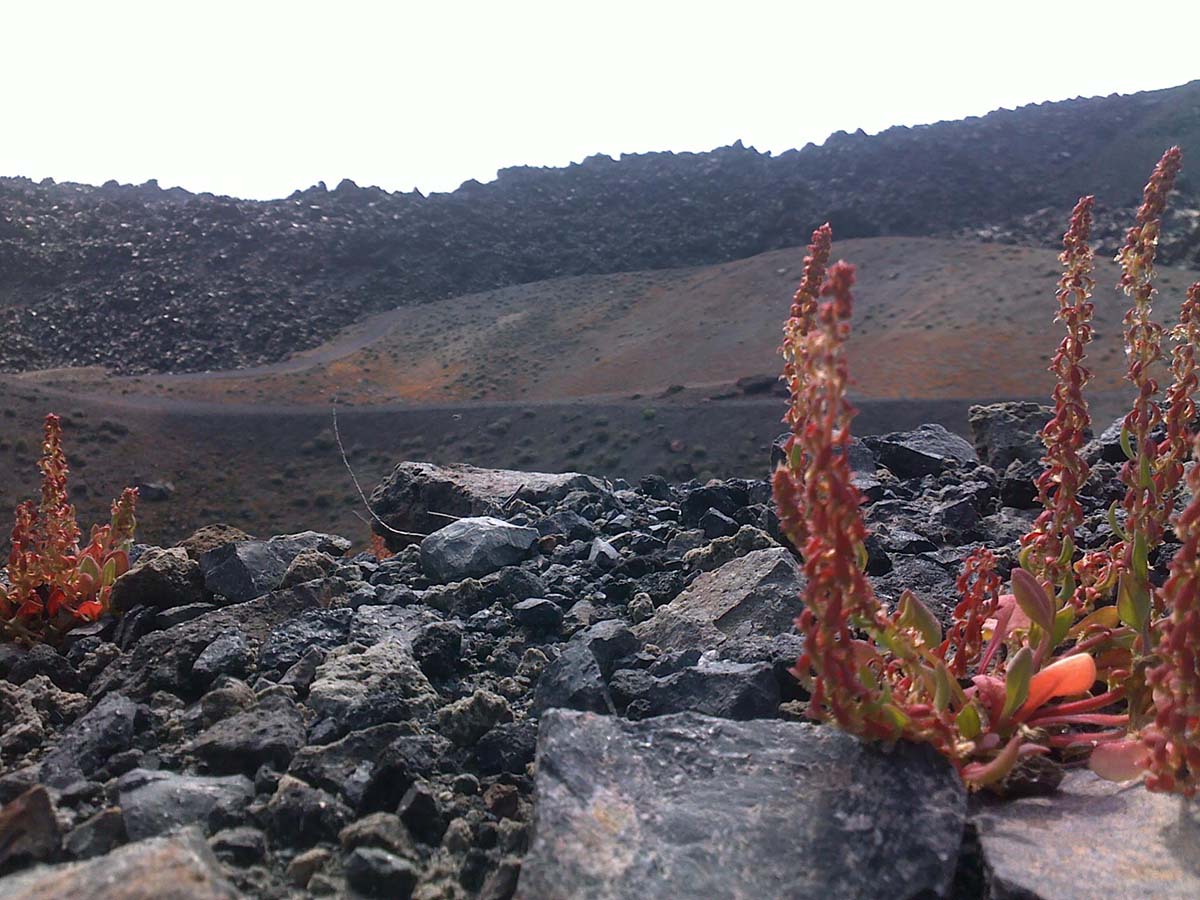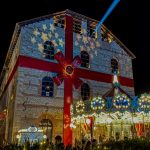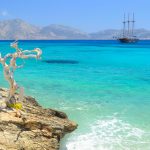Though Santorini is bustling with life and a cosmopolitan flair in the summer, its quiet and lonely ‘neighbor’, Thirasia, seems content in its tranquility.
Thousands of years ago, these separate pieces of land on the map, used to be one; along with Palaia Kameni, Nea Kameni and Aspronisi, they were parts of the prehistoric island of Stroggyli, much of which subsided during the Minoan volcanic eruption around 1613 BC . Born from billions of tons of lava and ash, Thirasia covers an area of 3570mi2 west of Santorini. It is located directly opposite the Ammoudi village in Oia and at about a nautical mile, which means it is easily reached by boat in less than 20 minutes. So close and yet so far!
Though Santorini remains one of the top travel destinations in the world with a tremendous tourist development, Thirasia is an island with an inverse course, a place where time seems to have frozen. The relaxed rhythm of life and the absence of any tension allow the immersive landscape to become the absolute protagonist. Thirasia is an one-of-a-kind island, with barren volcanic land, endless stone walls and terraces, black beaches and strong Aegean winds. Thirasia is evidently the most zen island of the Cyclades.
Trip to time and settlements of Thirasia
Riva
As you disembark from the ship in Riva, the modern harbor at the northern end of the island, you get the feeling that something is off: like you’ve got into a time machine that took you years back when everything was tough but pure and authentic. The place exudes an unprecedented tranquility, while the volcanic terraces and the endless dark rocks accentuate the already fierce scenery. Multicolored boats sailing the tranquil waters and traditional fish taverns along the gulf welcome visitors to the enchanting soils of Thirasia.
Agia Eirini
The local bus and taxis depart from Riva, as well, and it takes you to the other settlements of the island. Built on a hill over the picturesque seaport is the settlement of Agia Irini. According to tradition, Santorini was named after the old church of the village, Santa Irene, in Latin.
Manolas, the capital
Manolas, the capital of the island and the largest settlement of Thirasia is less than 3 miles away from Agia Irini. Built on the edge of the island’s caldera, it looks like a miniature of Fira and gives you unobstructed views of the Caldera of Santorini and the Volcano.
The traditional Cycladic village of the 19th century with narrow cobbled streets, the houses that have been carved inside the volcanic rock, the old windmills, the imposing 1874 church of Agios Konstantinos and the nostalgic atmosphere, has accommodation, shops, a grocery store, an ATM, a regional office and a traditional bakery with an old-timey wood oven. Untouched by touristic development, like the rest of the island, it is an ideal destination for those who enjoy the simple, small pleasures of life.
Korfos, the port in Manolas, leads to the village through a paved stone paved path. The 270 steps promise to encourage you with the unique scenery: volcanic red rocks and the breathtaking views of the endless blue of the Aegean, till you reach the old harbor of Thirasia. In the sheltered tourist harbor of Korfos you will find many taverns where you can enjoy traditional local specialties and fresh fish.
Another settlement of Thirasia is Potamos (mean. River), built in a ravine – hence its name. It is worth visiting it in order to see the cave dwellings, the courtyards and the churches of Agios Dimitrios and Panagia Giatrisa in the centre of the village.
The thrill of discovery
If you seek a unique experience, you will move to the southwestern part of the island to the former rural settlement of Agrilia. The ruined little village with the cave houses and old canyons was the oldest and largest settlement of Thirasia until 1928, when it gradually began to desert. Its entrance is decorated with one of the most beautiful churches throughout the Aegean, the Church of the Presentation of the Virgin Mary (Eisodia tis Theotokou) or Virgin Mary of Lagadi, built in 1887.
If you are among the lovers of hiking, then, starting at Manolas and heading southeast, you can reach a second uninhabited village, Kera. As you approach the village or the mountain top chapel of Prophet Elias (one of the 21 chapels of the island) at an altitude of 885 feet, you will enjoy a breathtaking view of the Volcano. Find the route that leads southwards to the cape of Trypiti and the Monastery of the Assumption of Virgin Mary (or Panagia Kera). You will be glad to discover that trekking in Thirasia is a true revelation.
Black volcanic beaches
The scenery on the beaches of Thirasia is not the classic postcard-famous Cycladic dipole of turquoise water-sandy beach, but an impressive composition of black pebbles, a steep coastline and a spectacular view of the Volcano, which will satisfy every traveler. The most famous beaches of Thirasia are those of Riva and Korfos, rich with thick black pebbles, pumice and crystal clear waters.
How to get there
Thirasia can be easily reached by boat departing from Ammoudi, Santorini, in about 20 minutes. Alternatively, with a ferry from the Athenian harbor to the port of Riva and Korfos. Thirasia is also connected directly to Piraeus via the line Paros-Naxos-Ios-Sikinos-Folegandros-Thirasia-Santorini-Anafi.



